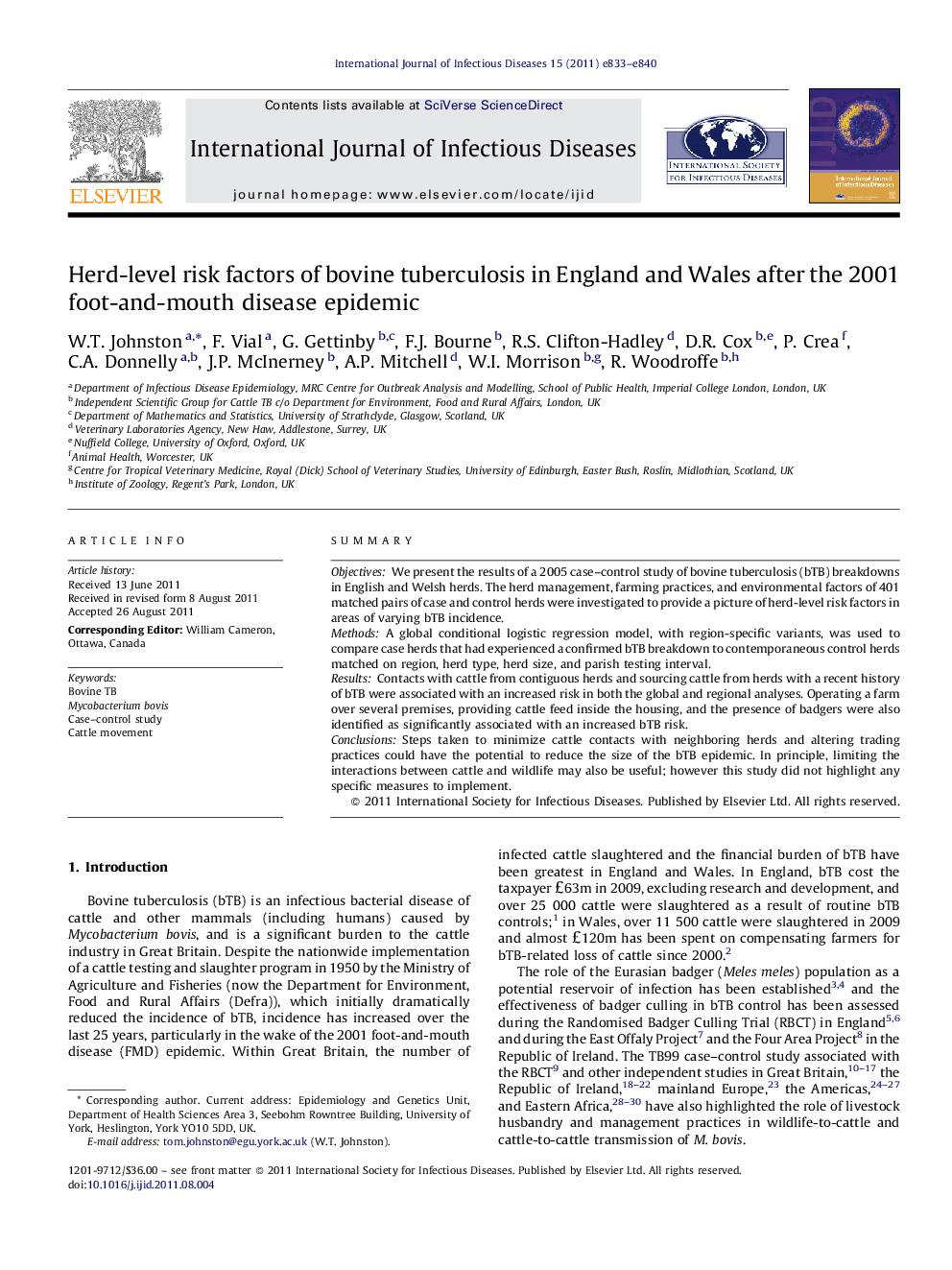| Article ID | Journal | Published Year | Pages | File Type |
|---|---|---|---|---|
| 3363277 | International Journal of Infectious Diseases | 2011 | 8 Pages |
SummaryObjectivesWe present the results of a 2005 case–control study of bovine tuberculosis (bTB) breakdowns in English and Welsh herds. The herd management, farming practices, and environmental factors of 401 matched pairs of case and control herds were investigated to provide a picture of herd-level risk factors in areas of varying bTB incidence.MethodsA global conditional logistic regression model, with region-specific variants, was used to compare case herds that had experienced a confirmed bTB breakdown to contemporaneous control herds matched on region, herd type, herd size, and parish testing interval.ResultsContacts with cattle from contiguous herds and sourcing cattle from herds with a recent history of bTB were associated with an increased risk in both the global and regional analyses. Operating a farm over several premises, providing cattle feed inside the housing, and the presence of badgers were also identified as significantly associated with an increased bTB risk.ConclusionsSteps taken to minimize cattle contacts with neighboring herds and altering trading practices could have the potential to reduce the size of the bTB epidemic. In principle, limiting the interactions between cattle and wildlife may also be useful; however this study did not highlight any specific measures to implement.
